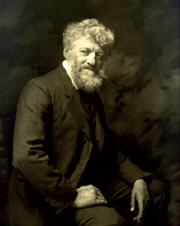
Louis Anquetin was a French painter noted for his association with the Post-Impressionist movement and for his works depicting scenes of Paris at night done in the Cloisonnism style. Anquetin took art lessons from French painters Léon Bonnat and Fernand Cormon and worked closely and exhibited with noted artists like Émile Bernard, Vincent van Gogh, Charles Angrand, Camille Pissarro, Georges Seurat, Paul Signac, Paul Gauguin and Henri de Toulouse-Lautrec. Although Anquetin remained active in the Impressionist movement of the time, he became interested in the works of Flemish masters in his later years. He along with Bernard came up with a post-Impressionist painting style called cloisonnism that was inspired by stained glass and Japanese ukiyo-e art and includes use of bold and flat forms separated by thick dark contours. L’Avenue de Clichy, an early work of Anquetin, was inspired by Japanese ukiyo-e prints. His popularity however waned after he abandoned the modern movements and took to studying the methods of Old Masters. His works such as Rinaldo and Armida done after the mid-1890s were particularly Rubensian and allegorical in nature. He also wrote a book on Rubens later in his life.